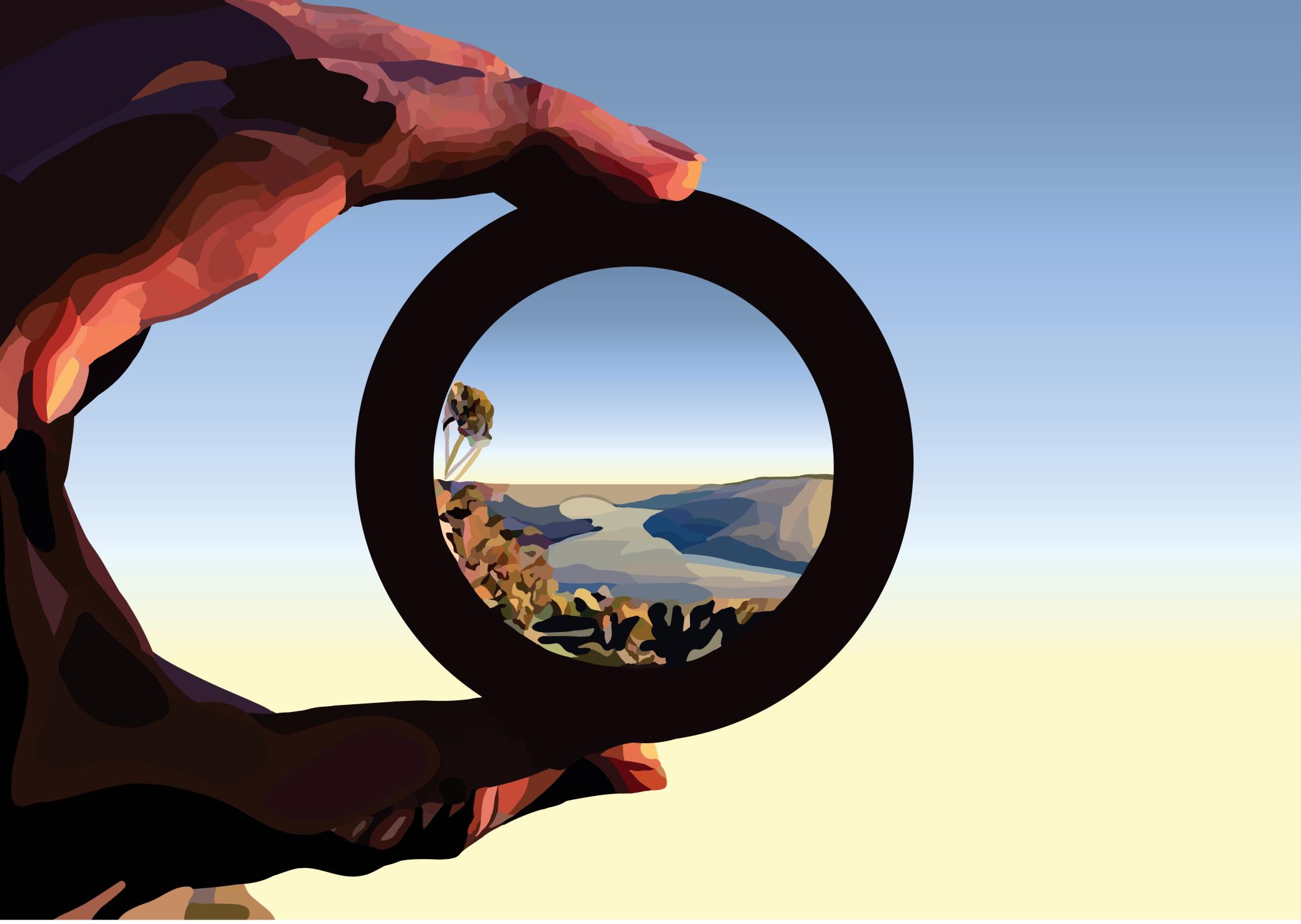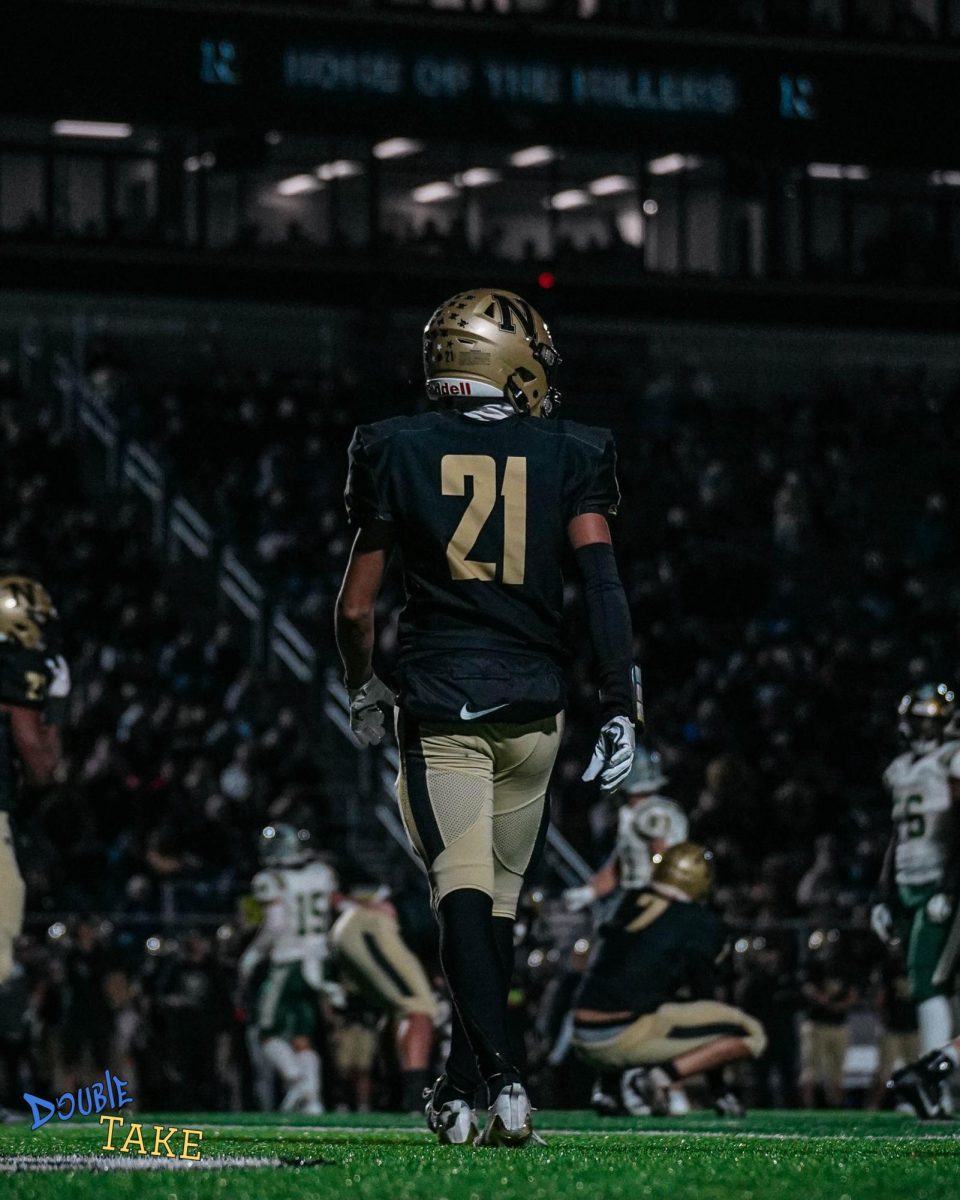Shoot happens
Spring is officially here, and the change in seasons opens the door for photoshoots filled with sunshine and action shots of lacrosse, track and other warm-weather sports. Students at this school will lower their ISOs, fiddle with their other camera settings and venture out into sunny skies looking for new clients for their businesses and shots to post on their Instagram accounts.
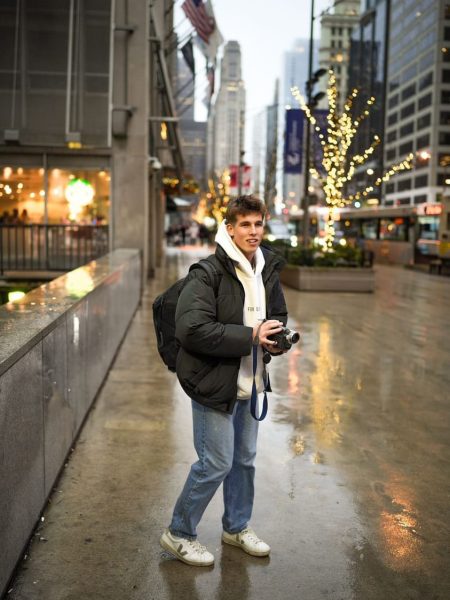
This inundation of camera tips and tricks available online has made photography much more accessible for students who don’t have time in their schedule to take a photography class; Introducing more talent but also more competition into the field.
Self-taught photographers are prevalent among young people, and student photographers have built careers out of what they once saw as a hobby.
Seniors John Gilbert and Anna Kindsfather, creators of photography accounts @jg.filmz and @annapiperscamera respectively on Instagram and seniors, said they both began experimenting with photography through sports.
Gilbert began posting hype videos and photos of friends to his photography account in 2021 and has since grown his following to 7,029 as of May 2024, diversifying into other fields such as portrait and event photography.
Kindsfather said she began taking photos in middle school because of a high school friend involved in sports photography.
“I started taking pictures of Carmel Dads Club teams. And soon people started recognizing me and paying me and then I got involved, like really involved in photography,” Kindsfather said.
Kindsfather said her experience as an amateur photographer in middle school led to her joining Carmel Hounds HQ in high school.
Josh Cale, creator of @doubletakeig on Instagram and junior, said he was inspired by family connections to join the photography industry.
Cale said, “My grandpa was a professional photographer. He kind of inspired me to get into the hobby.”
Cale said that he began experimenting with sports photography to gain experience with his camera, which would lead him to sports photography with Hounds HQ like Kindsfather.
Junior Page Murray similarly began taking photos of a field they were already interested in–theater.
Murray said, “So I first got into photography through being in theater and I would do a lot of performance photography. If I’d be in a show or helping with a show, (I would) also be taking pictures backstage and onstage.”
While each student began their photography with similar origins, researching and learning camera settings, editing and composition skills through the internet and social media, each chose to pursue photography professionally for different reasons.
Murray said her business and photography account, @paigemorganphotos on Instagram, developed organically after they started taking portraits of friends and family.
Kindsfather said she decided to pursue photography as a business after realizing she could make a profit from a hobby she enjoyed.
Kinsfather said, “I actually started my own business in sixth grade when I was, I think, 12. It’s called Anna Piper’s Camera. And I started it just because I wanted a way to make money that was (through) doing what I loved.”
Kindsfather said she initially relied on her community for jobs, such as her neighbors who paid her to photograph their kids playing basketball.
Gilbert said it took him six months to begin pursuing JG Filmz as a business.
“After six months of doing free work and building my portfolio, I began charging, and then I realized that the real money wasn’t in the sports, because I started researching my future in this. NFL, NBA photographers, they may make a good living, but they don’t make that much compared to what you could make as a real business owner,” Gilbert said.
Gilbert said his research into the business of the photography industry caused him to branch out and diversify the subjects of his photography.
Sharing lenses
As a beginner, Gilbert said he found value in developing connections with more experienced photographers in industries such as event and portrait photography.
Annie Salter, University of Cincinnati sophomore and creator of @aksalterphotos, began pursuing photography in eighth grade.
Salter said, “After my freshman year, I really fell in love with the storytelling aspect (of photography), and since I also joined Cabinet, I need a way to raise money for my fundraising efforts, I took on some portraits for some cash to donate to Riley Children’s Hospital and that’s kind of where it all began.”
Salter said she appreciated the initiative of younger photographers who reached out to her for advice and questions.
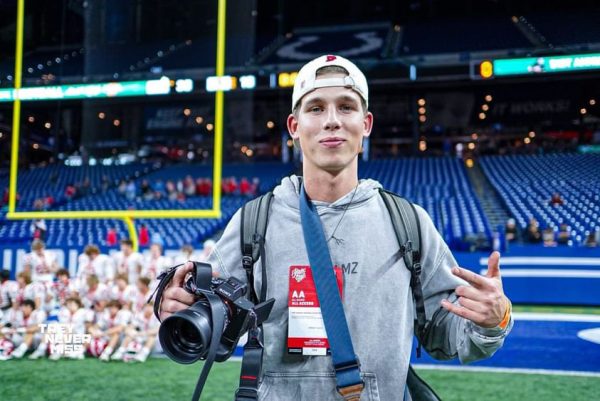
“(JG Filmz) is someone I’ve seen who’s been putting in the work to make a brand for himself. He’s DMed me many times, being like, ‘Annie I need your help on how to do portraits, or how to pose people.’ He’s made that effort and it’s never too early to start making that effort for yourself because opportunities are everywhere,” Salter said.
Karl Zemlin, part-time professional photographer for Indy Car, said he began working within the racecar industry through connections with another photographer.
Zemlin said, “A good friend of mine, and a mentor as a photographer, was a long-time member of the IndyCAR photography team. He liked what I was doing and recommended me to the photo manager at IndyCAR–so my way into motorsports was very easy. Someone basically took me by the hand and pushed me through the door.”
Gilbert said he was surprised by the amount of support offered by the photographer community.
He said, “You would think everyone would be competing with each other, but everyone is actually so supportive of each other. People are always commenting on my posts and it truly makes me feel super good when I get a comment from another photographer.”
Cale said he found value in being a mentor himself within Hounds HQ.
Cale said, “Right now I’m focused on training up the younger guys, to, to know, to help them get better and help them improve. So that way when the seniors graduate from Hounds HQ next year, then we can have another group of guys coming up and improving.”
Still, Kindsfather said the popularity of photography has made competition common in the industry.
Kindsfather said “It’s kind of like a competition now to see who can get the most business and who can charge the most. So I’d say that the most challenging part is just the competition aspect of it, because everybody has their own business.”
Despite the competition, Kindsfather said she still sees owning her own business as rewarding.
Kindsfather said, “I would say that people recognizing you and congratulating you for what you do and how hard you work is like the most rewarding part of it.”
Building business
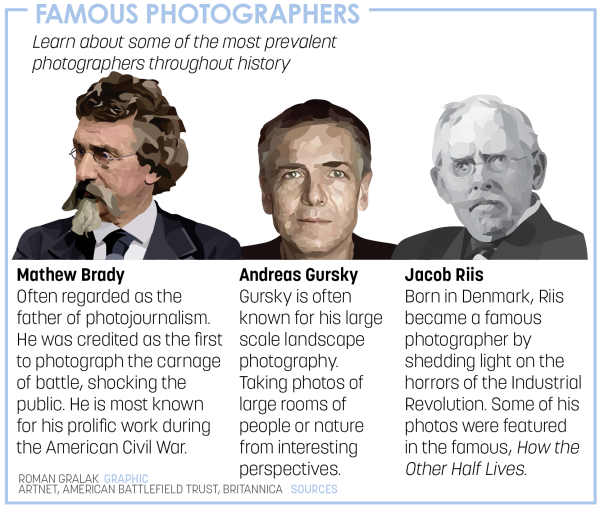
Regarding their experience creating their portrait photography business, Murray said she appreciated the unorthodox work experience they gained.
Murray said, “It’s definitely complicated (because) I’m also in a ton of activities in school. So trying to balance that and running a business can be tricky, but it’s also really fun.”
Murray said choosing her own hours and acting as her own boss has offered her freedom a traditional part-time job could not provide.
Murray said, “So it’s very much like, on my own schedule, which is really nice in terms of being able to be busy, but also still having a job.”
Gilbert said it was difficult to treat photography as a professional endeavor compared to a hobby because it required valuing your skills.
Gilbert said, “And I will still say this to this day–the hardest part of starting any business is charging your clients. Like, knowing your worth is probably the hardest part.”
Gilbert said his first corporate client was a home health business, and like many new photographers, he undercharged.
He said, “It was (for) home healthcare and I had no idea what to film, but I just went in there acting confident and it turned out great. That was my first real client and I only charged him like 125 bucks.”
Since his first corporate job, Gilbert said, “I’ve done anywhere from sports to real estate to senior photos to weddings to portraits.”
Gilbert said he didn’t feel the need to specialize in any specific area.
“Many people say, ‘Oh, find a specific niche and target that and like, become the best in your industry,’” Gilbert said, “what I’ve realized is sometimes it’s better to be diversified in services.”
Gilbert said he’s brought his background in sports photography and hype videos to more corporate contexts, like real estate.
Salter said she agreed with Gilbert. While Salter began photography through portraits, she is currently working as an intern for Bearcats Digital, the design, video and social media team that manages the Cincinnati Bearcats Instagram account.
Salter said she was the sports editor and the photography manager for Pinnacle yearbook in high school but did not begin pursuing sports photography in college until a photographer friend brought her to a game to take photos.
“I just got FOMO; I missed the feeling of being on the field,” Salter said, “I applied to the (Bearcats Digital) program my sophomore year and I got it, and I think I just love the more candid moments and being able to do that on top of the posed ones because posed photography portraits is really where you’ll get more of your business.”
While Salter said she does not plan to pursue sports photography as a career, she said posting sports to her photos account has helped show clients that she has experience in multiple fields of photography.
Cale said it is important to grow your account in order to be known as a photographer.
Regarding his photography account Double Take, Cale said, “Growing Double Take has been a very interesting experience because I started essentially with nothing, and I had to grow it to what it is now. So that process has been, you know, it’s been a learning experience, but it’s also been really rewarding to see it pay off and see it grow. Not only in the followers and the likes, but just in how people reference me now.”
Gilbert said he agreed with Cale about the importance of name recognition and marketing.
Gilbert said, “I thought I was pretty good at doing the stuff (photography), but I didn’t know how to market myself. But then vice versa, you can also have the best marketing in the world and your product is kind of terrible and that’s going to get you some revenue, but in the long term, it’s not going to work since people know your product’s terrible.”
Gilbert said finding the balance between marketing and quality is one of the most important aspects of turning your photography into a business.
Candid for the camera
 As a senior portrait photographer, Salter said connecting with her teenage clients directly is important to her.
As a senior portrait photographer, Salter said connecting with her teenage clients directly is important to her.
Salter said, “Trying to make my editing style and my energy seem very approachable has been a big deal to me and I get most of my business just from people about me and say like, recommending me to their friends.”
Gilbert said he agreed with Salter, and said he wants his clients to be comfortable and stress-free when working with him.
“I want (JG Filmz) to be easy to work with…and I want it to be fun. I want it to be a fun experience that tells a story,” Gilbert said. “I want to get the candid shots, I want to get the fun angles and do exactly what the client is looking for.
Salter said an important aspect of running a photography business is to develop a distinct brand and style that stands out in the competitive portrait industry. Salter said she’s created her own editing style, so she focuses less on trends and more on her personal taste.
“The hard part is like: ‘How do you take some things that you’ve seen and make it something that’s different and new?’ because that’s what people want to see–that’s going to make you stand out,” Salter said.
Salter said she has tried to incorporate her love of fashion into her photography business. Salter created a style guide for senior portraits and makes suggestions when asked by clients. “I even recommend a clothing rental subscription service that I use…and that’s kind of how I’m trying to set myself apart,” Salter said.
Salter said making connections with her clients is one of the most valuable parts of her business, and she hopes to create a safe space for self-expression. As a member of the LGBT community, Salter said it was important to promote inclusivity in her business.
“I love talking to people and making them feel confident,” Salter said. “That’s my number one goal of everything. I want you to radiate confidence leaving our photo shoot, and I want you to be even more confident seeing those photos in a week and be like, ‘Oh my gosh, like that’s me. Like, I look awesome.’”
Take a picture, it’ll last longer
Determining what to do with their businesses post-graduation is at the top of many student photographers’ minds. While some become inspired to grow their enterprises, others hope to enter fields where their photography skills will be an asset.
Salter said her early interest in photography impacted her choice of major at the University of Cincinnati. Salter attends the School of Design, Art, Architecture and Planning (DAAP) and studies communication design.
Salter said while she did not want to study fine arts, she did want to pursue a creative major.
“I’ve had a lot of time to really think about what I want to do with my career and it’s learning more towards doing photography and being a freelancer potentially…I think I have a lot of options and that’s the best part,” Salter said.
Kindsfather said she already has plans for photography at the University of Mississippi, where she will be attending in the fall, and she said she hopes her audience will grow as a result.
Kindsfather said, “I already have an internship set up with their athletics team to do baseball and football. I’m going to do that for Ole Miss. It’s like a paid internship. And then with my own business, I’m just going to keep doing what I’m doing and post my photos. Hopefully people start following me and I get a lot of attention from like what I do at Ole Miss.”
Murray said she’d like to sustain her business, even if it stays relatively small.
Murray said, “Photography isn’t the main thing I want to pursue, but it’s something I’d always like to have in my life…And I don’t mean to necessarily be super big with it. But it’d be nice to have a steady business for as long as I can.”
Gilbert said he hopes to continue growing his business and is considering studying business and entrepreneurship after graduation. While he wants to grow JG Filmz, Gilbert said also recognizes signs of burnout he’s trying to avoid.
“Right now, I’m going through a little bit of burnout and it’s tough balancing school, photography, extracurriculars and all that, so just make sure you stay having fun with everything that you do,” Gilbert said.
Find the focus
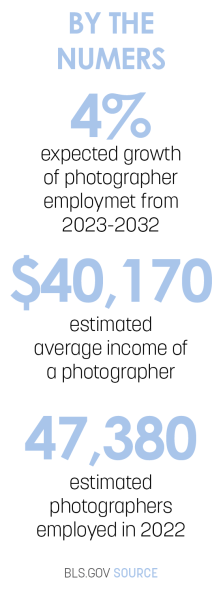
Gilbert said he recommended new photographers follow a few step.
“Step one: this might be a little bit risky but rent a camera for a little bit and just test that out and if you like doing it,” he said, “Some people invest in a camera and everything and end up hating it and it’s actually really common.”
Gilbert said he also recommended doing free work before charging to build, doing independent research for your camera and technology, networking and building relationships and trying to set yourself apart from competition through experimentation.
Zemlin said starting young is beneficial for anyone interested in a particular field, and photography has become and increasingly accessible hobby.
“Cameras are so much more accessible now than when I was younger, and the learning curve with digital photography is a lot shorter than it was with older technology. By the same token, the more accessible cameras are so automated that it may be more difficult to learn and understand the science and techniques of creative photography. I expect the art form to go in some unexpected directions as creative people learn to harness new tools in creative ways.”
While Salter began experimenting with photography about six years ago, she said she still wished she took her work more seriously as a beginner.
Salter said, “I wish that when I would have begun, I would have seen this being my future career because I think now I’m trying to hustle to make sure I can make this my career because I really want it to be.”
Kindsfather said if she could tell her beginner-self anything, it would be to take more opportunities to build experience.
“I would tell myself to keep showing up, keep going to everything, go to every sporting event, go to everything that you have the opportunity to do because even if people in the beginning don’t take you seriously they will when they see you at everything,” Kindsfather said.
Murray said she agreed with Gilbert’s recommendation to experiment and see if you enjoy photography.
Murray said, “Honestly, if you want to do it, do it. It’s one of those things where the only thing that’s stopping you is yourself. I mean, you can easily go on eBay to buy a camera or find a family member who has an old camera. Even start on your phone. So many great photographers start on the phone; I started on my phone. And honestly, just get started.”
See some student photographers’ favorite shots below.


